来源:福布斯
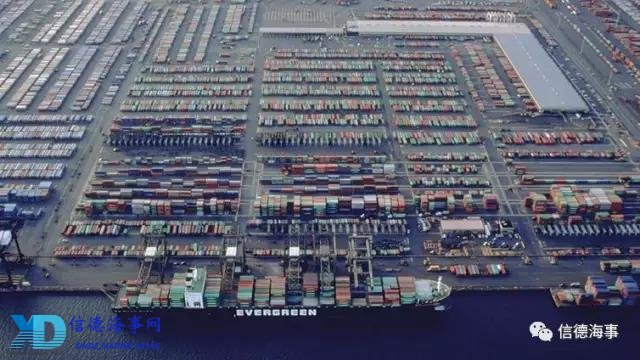
为了加强作为海运强国的地位,确保重要的供应链,提升国际贸易能力,增强地缘经济的影响力,中国一直在向亚洲南部到中东、非洲、欧洲甚至南美洲的一系列港口寻得发展和经营权。
大约10年前,大型中国国有企业开始在全球范围内收购港口,而非低调行事。现在,在称之为21世纪海上丝绸之路(MSR)的战略框架下(也就是更广泛的一带一路倡议(BRI)的海上部分),这些收购在这个跨大陆网络开始形成时,已经取得了巨大的意义。
中国国有运输公司购买海港,或者赢得在另一个国家开发新的海域或陆上码头的权利……现在,似乎差不多每天都能听到这类新闻。 星期一,我们发现招商局港口控股有限公司(China Merchants Port Holdings)刚刚收购了巴西港口运营商TCPParticipações 90%的股份,收购价近十亿美元。 此前,有消息称,江苏省斥资3亿美元,在阿布扎比的哈利法港口附近建立了一个自由贸易区。去年年底,中国远洋海运集团获得阿布扎比一个新码头的经营权。7月,招商局港口控股有限公司以11.2亿美元,获得斯里兰卡的汉班托塔深海港口的经营权。接下来,我们可能会听到立陶宛如何终于打开大门,让招商局港口控股有限公司进驻克莱佩达港口,并在此展开经营。《金融时报》估计,仅在过去一年,中国已经向国外的海港投资了超过200亿美元,比前一年增加了一倍。
这些新收购让中国不断增加的国际港口投资组合进一步增加。现在这些投资组合遍布世界各地,拥有的港口分布在希腊、缅甸、以色列、吉布提、摩洛哥、西班牙、意大利、比利时、科特迪瓦埃及等地,以及另外十几个国家。
海上丝绸之路
一带一路倡议(当时叫“一带一路”)于2013年在阿斯塔纳首次提出。一个月后,习近平在雅加达第一次提出21世纪海上丝绸之路。目标是为中国建造一系列从中国到欧洲和非洲的三条强化后的海上航线,新建港口、制造区,甚至全新的城市。 虽然这个举措最初经常遭到国际社会的怀疑甚至嘲讽,但中国一直将港口一个一个拼接起来。现在,这一举措已经很难边缘化或忽视。
近几年来,中国创建了一个完全由国家所有并经营的全球航运帝国。 招商局港口控股有限公司、中国远洋海运集团等巨型国有企业现已在全球15个国家经营29个港口和13个国家的47个航站楼。 除此之外,其他相对较小的国有企业,如上海国际港务集团、宁波舟山港和连云港等,也纷纷涌入世界海港陆港的争夺中。
这些意味着什么?
从定义上看,海运是国际事务。我们需要问,中国近期的海上扩张是否正常。我们是否未经适当分析,过于重视中国的港口并购?
在我们生活的世界,一个国家的港口运营商在其他国家拥有和经营着码头。PSA(新加坡港务局)在15个国家运营码头,丹麦马士基航运公司(Maersk Line)在36个国家拥有57个码头,瑞士地中海航运公司(MSC)在22个国家拥有35个码头,而迪拜的DP World在40个国家/地区设有77个港口。 所以,如果我们只看原始数字,中国的海上活动似乎和世界其他地方一样。
中国海运公司在国际上的运作方式和项目的表象与感觉之间往往存在一些关键的差异。
“中国远洋海运集团和招商局港口控股有限公司和PSA、DP World不一样,不按完整商业逻辑经营,又必须符合国家政策,如一带一路倡议。” 经合组织国际交通论坛的Olaf Merk解释道。“因此,他们愿意为某些码头支付比任何其他运营商更高的价格。”
虽然中国新一批港口从根本上看是由经济驱动的项目,但也有明显的政治因素。
而中国的国际港口收购,起初似乎是进攻性的举动,但本质是内在的防守。 通过拥有和经营亚洲、欧洲和非洲重要物流节点的复杂网络,中国本质上可以控制大部分境内的重要商品供应链,如来自中东的能源资源,以及出口的境外贸易路线。 二者让中国更为自立,减少了其他国家可以应用的政治和经济杠杆。
中国的国际港口也往往具有很强的战略地位,不仅在欧亚大陆地图上点对点连接在一起,而且还与主要路口的陆上丝绸之路联系在一起,为中国提供了一系列新的选择,将商品和货物运进和运出。你也可以说,这些新的选择是一系列后门。 理论上说,如果一个航运贸易线路衰落,中国可以通过增加另一条线路的流量来绕过它。
例如,缅甸的Kyauk Phyu经济特区价值100亿美元,不仅在东南亚和南亚的尖峰地区成为中国的航运/制造中心,而且是中国海上和陆上丝绸之路的连接点之一,一条走廊北至中国西南部的昆明,已经配备了天然气和石油管道。 这为中国提供了运输中东能源的海上直接路径,完全绕过受美国较大影响的马六甲海峡。在危机时期,途径马六甲的线路理论上可以像开关一样关闭,切断中国大多数向西的海上贸易航线。
这些新港口进一步推动中国融入世界政治和经济结构。虽然似乎不合理,但如今,大笔资金用于交易,中国得到的是国际舞台上稳定立足点。这些立足点能维持数十年,在此过程中创造出新的地缘经济范式。国家领导人面带笑容地谈论“双赢”的合作伙伴关系时,像中国的海上开发这样的国际基础设施项目正在形成21世纪新的第一线,经济杠杆是可选的武器。
Merk补充说:“大量投资也让中国在不同地区有了地缘政治影响力,如南亚、非洲和地中海,接受投资的国家不太会违反中国的利益或立场。
“中国介入外国港口,有助于中国成为全球大国。”Clingendael Institute的弗Frans-Paul van der Putten说道。“亚洲、非洲、欧洲和拉丁美洲的不同国家,中国国有企业和中国政府作为港口和港口相关资产的金融家、建筑商、运营商、业主和主要客户,正在获得长期的经济影响力。由于港口在国民经济中通常发挥关键作用,这种影响可能会带来一定程度的政治影响力。”
中国港口收购与其他国家不同的另一个关键领域是,收购的目的往往不仅仅是开发单纯的海港,而是开发以运输为中心的完整经济区,这些经济区通常包括制造业、商业中心、发电厂,偶尔也会有住房项目。 随着中国的开发,新兴市场可以一举得到整体发展。
Merk解释说:“中国海外港口投资通常涉及中国各个国有企业:中国银行或国家开发银行,中国港口建设公司和中国运营商。新港口需要资金、设计、建造、经营、疏浚和维修; 中国企业渴望提供所有这些业务。”
这些“全包”港口项目的一个很好的例子是斯里兰卡南部的汉班托特(Hambantota)。汉班托特不仅应拥有深海港口,还有一个全新的经济生态系统,拥有大规模工业区、液化天然气厂、会议中心、体育馆和建在填筑地上的旅游区,以及一座机场(目前恰好是全球利用最不充分的国际机场之一)。
意味着什么?
中国国际港口项目的效益不止流往一个方向,因为这些项目往往对它们所处的地方和区域经济产生直接和立竿见影的积极影响。Merk指出:“中国对希腊比雷埃夫斯港的投资已将其转变为主要的地中海港口之一,增长率惊人。中国远洋海运集团的投资意味着港口能进一步吸引中国货。”
中国提供的是新兴市场、多样化经济体和一些停滞不前的欧洲国家所渴望的外国直接投资,为国家提供了原本无法承担的大型基础设施项目,然后提供货物、公司和其他投资者,以取得成功。基本上,中国同意关照供需双方(他们成为这些新的以港口为中心的经济区创造的货物和服务的买方和卖方),并允许东道国从经济冲击波中受益,随后产生共鸣。
虽然这些国际港口收购可能是中国式经济的另一个例子:最初人为地创造需求来吸收供应,直到别的市场力量介入。但中国已经证明,这种长期、多方面的发展是有效的。2003年至2012年间,大规模城市化时期建立的所谓“鬼城”,现在已经成为充满活力的经济中心。
中国并非通过“一带一路”制定今天的规划,而是为明天,为明年,为未来50年制定规划。届时,中国将拥有覆盖全球的完整的港口和贸易路线网络,手中拥有强大的杠杆,使他们能完全控制手中的供应链和地缘经济影响力,来做他们想做的事。
译 蒋鼎

In a bid to bolster its position as a maritime powerhouse, secure key supply chains, enhance its international trade capacities, and build up geo-economic leverage, China has been buying up the development and operational rights to a chain of ports that stretch from the southern realms of Asia to the Middle East, Africa, Europe, and even South America.
While big Chinese state-owned firms began acquiring ports around the world rather quietly roughly a decade or so ago, now, under the strategic framework of what has been dubbed the 21st Century Maritime Silk Road (MSR) — the watery part of the broader Belt and Road Initiative (BRI) — these acquisitions have taken on a booming significance as this inter-continental network begins to take shape.
It seems as if it is now almost daily news to hear about how a Chinese state-owned shipping firm has purchased a seaport or won the rights to develop a new ocean or land terminal in another country. On Monday, we found out that China Merchants Port Holdings just bought a 90% share of the Brazilian port operator TCP Participações for nearly a billion dollars. Before that, it was announced that Jiangsu province paid $300 million to build a free trade zone around Khalifa Port in Abu Dhabi -- a seaport which saw a new terminal go to China's COSCO at the end of last year. In July, China Merchants took control of Sri Lanka's Hambantota deep sea port for $1.12 billion. Next, we may hear about how Lithuania finally opens the doors and lets China Merchants move in and do their thing at Klaipeda port. In the past year alone, China has invested over $20 billion into seaports on foreign terrain, doubling the amount they spent in the previous year, according to estimates by the Financial Times.
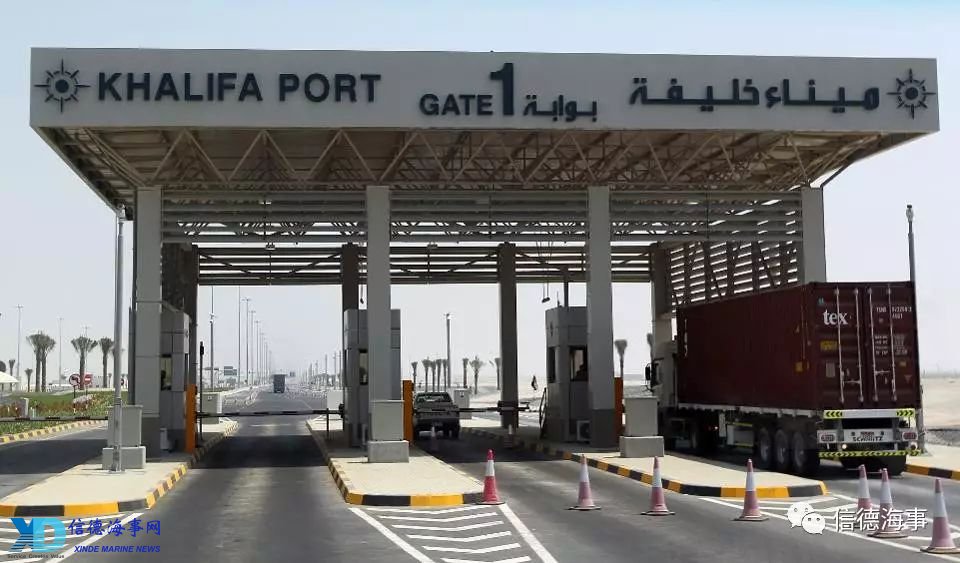
These new acquisitions add to China's growing portfolio of international port holdings, which now span the world with terminals in Greece, Myanmar, Israel, Djibouti, Morocco, Spain, Italy, Belgium, Côte d’Ivoire, Egypt, and around a dozen or so other countries.
The Maritime Silk Road
The 21st Century Maritime Silk Road was first announced by Xi Jinping in Jakarta a month after the initial revelation of the Belt and Road Initiative (then called One Belt, One Road) in Astana in 2013. The vision was for China to construct an array of three enhanced sea routes from China to Europe and Africa, and filling them with new ports, manufacturing zones, and even entirely new cities. While this initiative was initially often met with skepticism and even abject mockery by the international community, China has been cobbling it together piece by piece — port by port — and is now something that is extremely difficult to marginalize or ignore.
Over the past few years, China has created a fully state-owned and operated global shipping empire. Giant SOEs like China Merchants and COSCO Shipping are now running 29 ports in 15 countries and 47 terminals in 13 countries, respectively. On top of this, other, relatively smaller state-owned entities like Shanghai International Port Group, Ningbo Zhoushan Port, and the Port of Lianyungang are also jumping into the fray, gobbling up the world's sea and land ports.
What does all of this mean?
Ocean shipping is, almost by definition, an international affair, and we need to ask if China’s recent maritime expansion is really anything out of the ordinary. Are we putting an undue emphasis on the port acquisitions of China without proper contextualization?
We live in a world where port operators from one country own and operate terminals in other countries. PSA (Port of Singapore Authority) operates terminals in 15 countries, Denmark's Maersk Line has 76 ports in 41 countries, Switzerland's Mediterranean Shipping Co (MSC) has 35 terminals in 22 countries, while Dubai's DP World runs 77 ports in 40 countries. So if we just look at the raw numbers it would seem as if China's maritime movements are in step with the rest of the world.
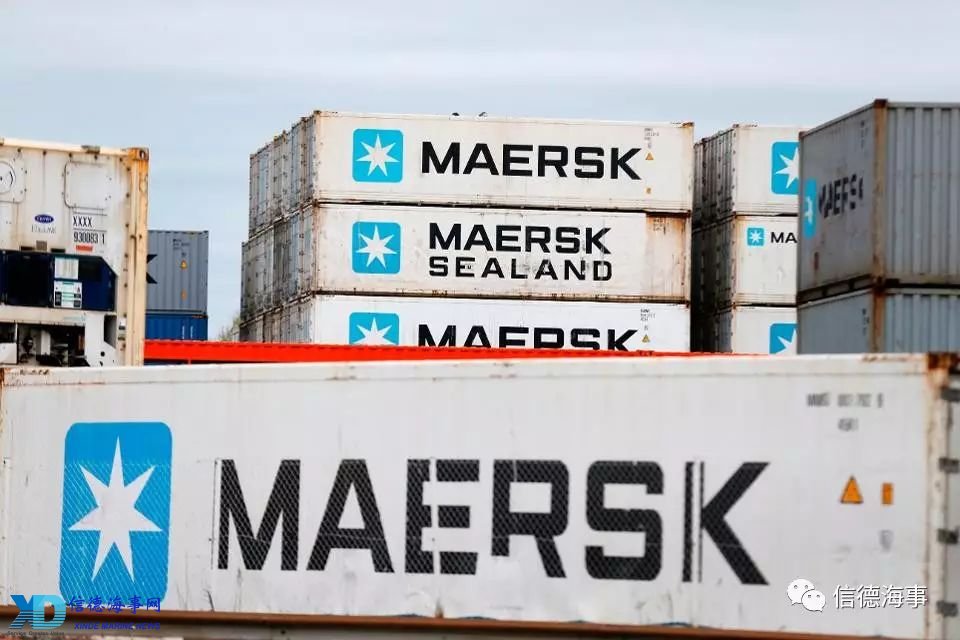
However, there are often some key differences between how China's maritime companies operate internationally and what their projects look and feel like.
“COSCO and China Merchants Holdings -- unlike PSA and DP World-- do not function according to a fully commercial logic, but also have to align to state policies, such as the Belt and Road Initiative,” Olaf Merk of the International Transport Forum at the OECD explained. “Hence their willingness to pay higher prices for some terminals than any other operator would do.”
A case in point: COSCO shipping was given no less than $26.1 billion by the China Development Bank to throw into Belt and Road projects earlier this year.
While China’s new array of port holdings are fundamentally economically motivated projects there is a glaring political dimension as well.
While China's international port acquisitions may at first seem to be offensive maneuvers, their nature is inherent defensive. By owning and operating a complex network of key logistical nodes across Asia, Europe, and Africa, China can essentially control a huge portion of its inbound supply chain for essential commodities -- like energy resources from the Middle East -- and outbound trade routes for its exports. They provide China with a higher degree of self-reliance and decreases the amount of political and economic leverage that other countries can apply.
China’s International port holdings also tend to be very strategically positioned, not only connecting together like a dot-to-dot across the map of Eurasia but also linking in with the overland Silk Road at key junctions, providing China with a new array of options for getting commodities and goods in and out of the country -- a series of backdoors, if you will. Theoretically, if one shipping trade lane goes down China can bypass it by increasing the flow through another.
Example: The $10 billion Kyauk Phyu Special Economic Zone in Myanmar isn’t only becoming a Chinese shipping/manufacturing epicenter on the cusp of Southeast and South Asia, but is one of the points where China's maritime and overland Silk Roads connect, with a corridor that shoots north to Kunming in southwestern China that is already being provisioned with gas and oil pipelines. This provides China with a direct route to the sea for energy shipments coming from the Middle East that completely bypasses the heavily U.S.-influenced Strait of Malacca, which could theoretically be flipped off like a switch in a time of crisis, cutting China off from most of its west-bound maritime trade routes.
These new port holdings also further enmeshes China into the political and economic fabric of the world. While seemingly irrational, inflated amounts of money are being passed over the table today, what China is receiving are strong footholds in the international arena that they will be able to stand upon for decades, creating a new geo-economic paradigm in the process. While national leaders put on smily faces and talk about “win-win” partnerships, international infrastructure projects like China's maritime developments are drawing up the new front lines of the 21st century, where economic leverage is the weapon of choice.

“The large investments also give China geopolitical clout in different world regions, such as South Asia, Africa, and the Mediterranean, with recipient countries less prone to counter Chinese interests or positions,” Merk added.
"Chinese involvement in foreign ports contributes to the emergence of China as a global power," concurred Frans-Paul van der Putten, the editor of the Clingendael Institute's popular New Silk Road newsletter. "In various countries in Asia, Africa, Europe, and Latin America, Chinese state-owned companies and the Chinese government are acquiring a long-term economic influence as financiers, builders, operators, owners, and major customers of ports and port-related assets. Given the key role that ports often play in national economies, such influence may result in a certain degree of political leverage."
Another key area where China’s port acquisitions diverge from those of other countries is the fact that they are often not only developing mere seaports but complete transport-centric economic zones, which generally include manufacturing areas, business centers, power plants, and, occasionally, residential housing projects. With China, emerging markets can get an entire slate of development in one fell swoop.
“Chinese overseas port investment typically involves a whole range of Chinese state-owned enterprises: a Chinese bank or development bank, a Chinese port construction company, and a Chinese operator,” Merk explained. “A new port needs to be financed, designed, constructed, operated, dredged, and serviced; all business activities that Chinese firms are eager to provide.”
A good example of these "all-inclusive" port projects is Hambantota, in Southern Sri Lanka. Hambantota is not only meant to be the locale of a deep sea port, but a completely new economic ecosystem, replete with a massive industrial zone, a liquified natural gas plant, a conference center, stadiums, a tourism area built on reclaimed land, and an airport (which is currently happens to be one of the most underutilized international airports on the planet).
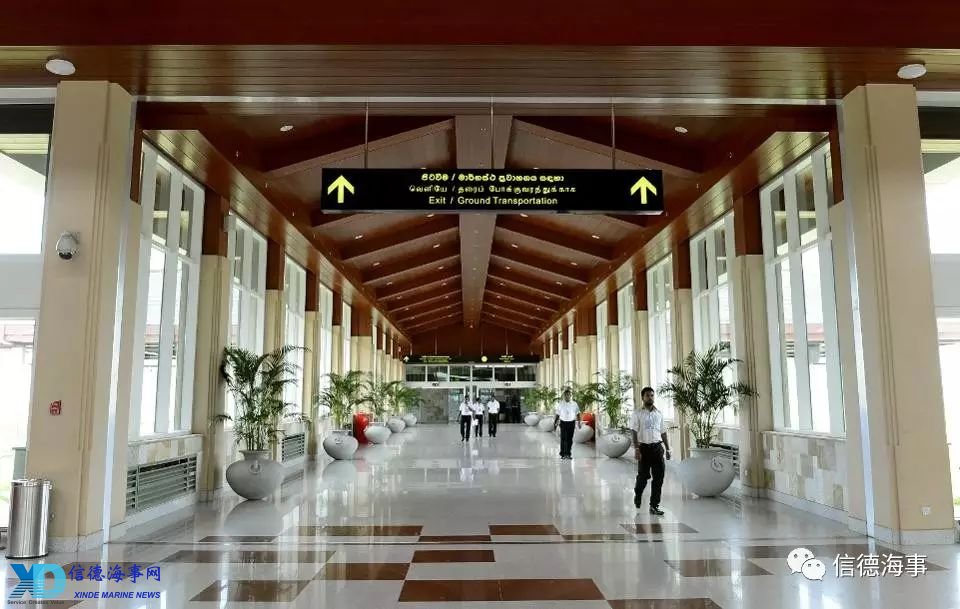
What's in it for us?
The benefit flow of China's international port projects doesn’t only go one way, as they often have a direct and immediate positive impact on the local and regional economies that they are being developed in. As Merk points out, “Chinese investment in the Greek port of Piraeus has transformed it into one of the main Mediterranean hub ports, showing spectacular growth rates. Investment by China’s COSCO means that the port will be more likely to attract Chinese cargo.”
What China offers is the FDI that emerging markets, diversifying economies, and some of the stagnant countries of Europe are hungry for on a silver platter, provisioning countries with large-scale infrastructure projects they couldn’t otherwise afford and then providing the cargo, companies, and other investors to make them a success. Basically, China agrees to take care of both sides of the supply-demand dynamic — they become both the buyer and the seller of the goods and services these new port-centered economic zones create — and allow the host countries to benefit from the economic shockwave which subsequently resonates.
While these international Chinese port acquisitions may appear to be another example of China-nomics, where demand is initially artificially created to absorb supply until more sentient market forces kick in, but China has proven that this form of long-term, multifaceted development can be made to work. Most of China’s so-called ghost cities that were built in the mass urbanization phase between 2003 to 2012 have now become vibrant economic hubs.
What is being laid down via China’s Belt and Road isn’t something for today, but for tomorrow, next year, 50 years from now when China has a complete network of ports and trade routes that cover the globe and their hands on a powerful set of levers that give them full control of their supply chain and the geo-economic leverage to do what they please.
*Correction: Maersk now has 76 ports in 41 countries, not 57 terminals in 36 countries.
免责声明:本文仅代表作者个人观点,与信德海事无关。其原创性以及文中陈述文字和内容未经本站证实,对本文以及其中全部或者部分内容、文字的真实性、完整性、及时性本站不作任何保证或承诺,请读者仅作参考,并请自行核实相关内容。
投稿或联系信德海事:
admin@xindemarine.com
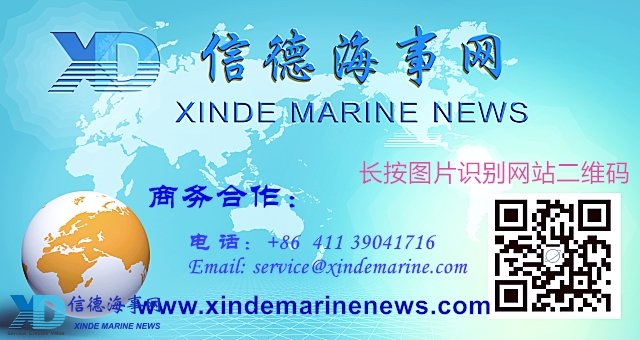
11-01 来源:信德海事网
06-01 来源:信德海事网
06-20 来源:信德海事网
07-19 来源:中国船东互保协会资讯平台
04-12 来源:信德海事网
12-10 来源:船之友 作者验船师袁晓东
10-15 来源:中远海运
07-04 来源:信德海事网 刘云婷
03-30 来源:信德海事网
01-22 来源:信德海事网